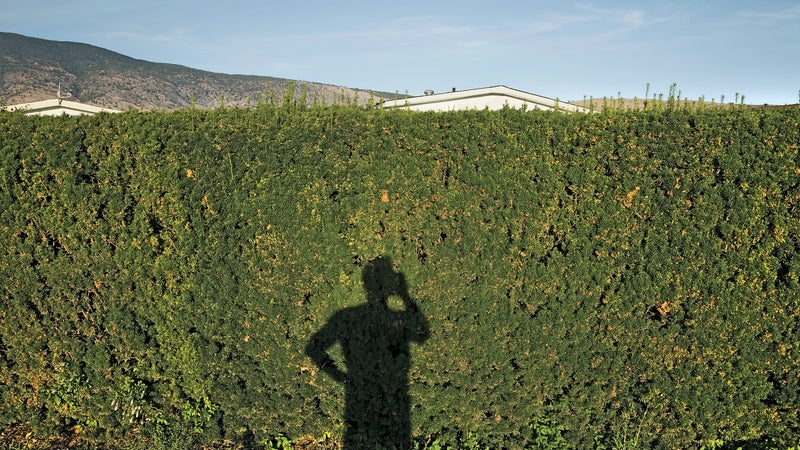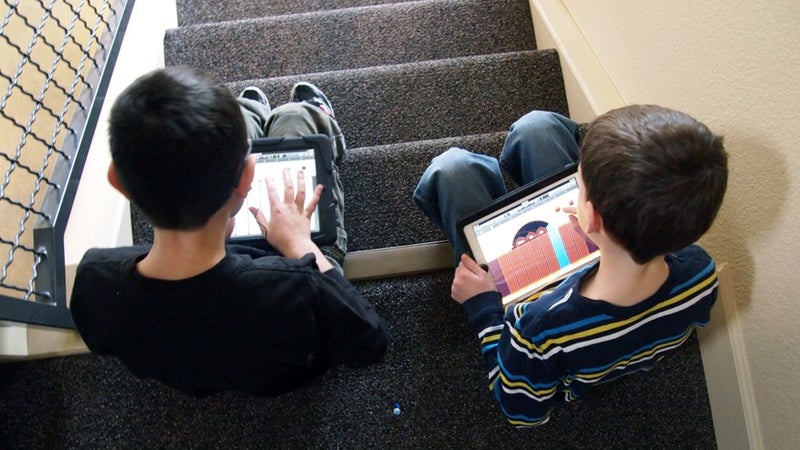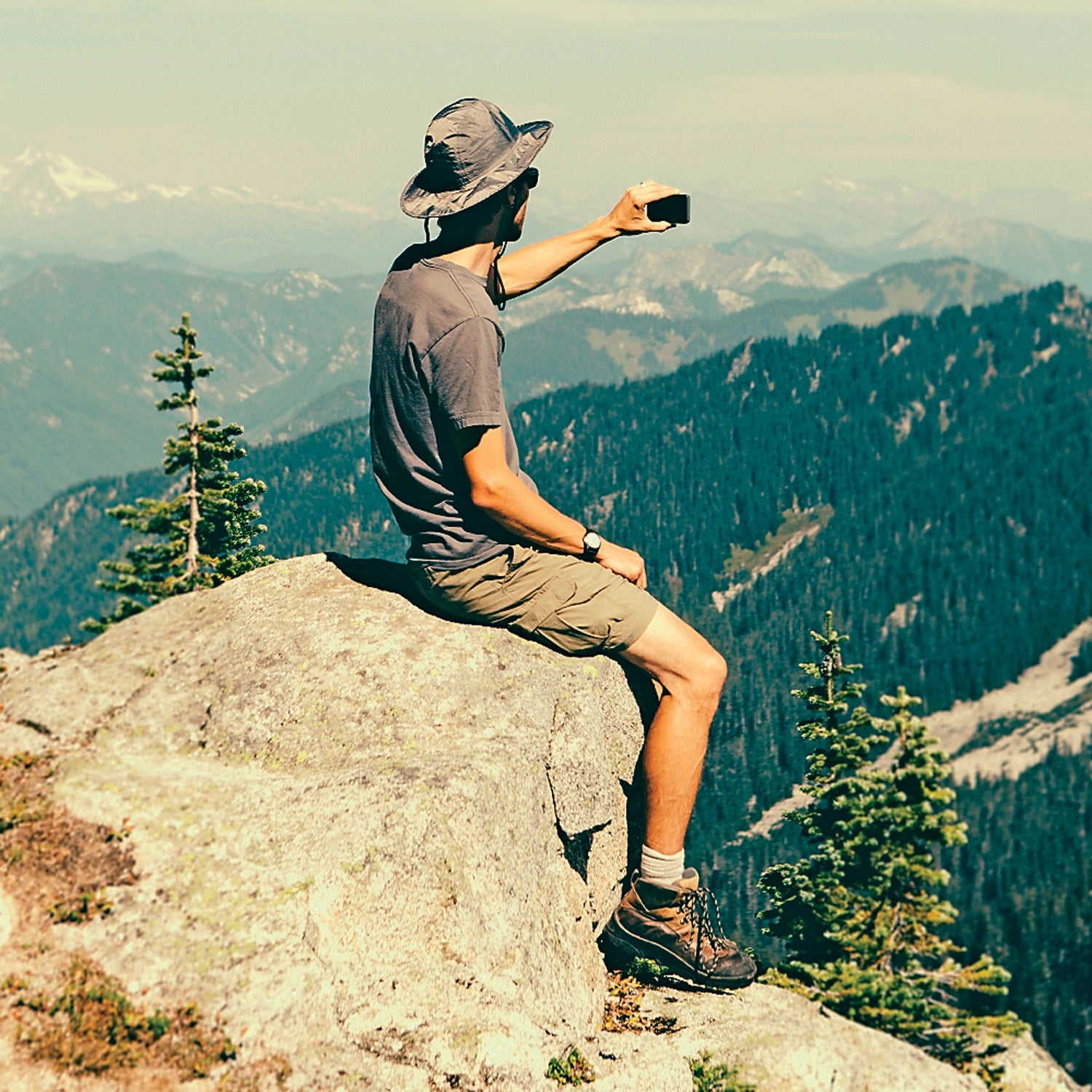Sometimes the endless buzzing and impulsive need to check notifications makes us want to chuck it all and go off-grid for a while. Then we remember that we have a job and, you know, staying in touch with our loved ones and the outside world isn’t such a bad thing overall. That doesn’t mean we have to settle for an overstuffed inbox and camera roll—not to mention the accompanying scatterbrained feeling. It’s all about the plan of attack. Observe:
Tame Your Phone

Keep it out of sight. A recent UK study found that simply having your mobile device in your hand or on the table can have “negative effects on closeness, connection, and conversation quality.” Whether you’re out hiking or drinking beers with a friend, keep your device tucked away and silenced.
Play favorites. Unless you adjust your settings, all notifications and vibrations sound and feel the same. But you can change that. First create a VIP list of emergency contacts—the babysitter, your spouse, your kids. Then, depending on which kind of phone you have, sort out how to allow calls only from your VIP list when you’d like to be otherwise unreachable. (On an iPhone, for example, turn on the Do Not Disturb function.)
Break the loop. In addition to controlling the pleasure systems of the brain, the neuro-transmitter dopamine also causes what’s known as seeking behavior. Once you start searching for new information, each tweet, like, message, or notification increases your desire to keep going—creating what experts have dubbed the dopamine loop. To break this cycle, Larry Rosen, a psychologist and the author of , a book about the hold technology has over us, suggests reconditioning: place your phone on silent and set it face-down for 15 minutes, then give yourself a minute to respond to texts and e-mails. “It sends a stimulus to your brain that says, ‘You’ll get to check me, and you’ll be OK,’ ” Rosen says. “After that one minute, turn the phone off again and repeat.” Installing the app (iOS; $5), which tracks how many times each day you pick up your phone and how many hours you spend on it, also helps. “Monitoring tends to make people do a better job,” says author Gretchen Rubin, “even apart from any conscious desire.”
Set House Rules

Block the blue. Any kind of light can interfere with your sleep, but the shorter-wavelength bluish tints, like the kind emitted by LED-backlit screens, are especially disruptive—they suppress the production of melatonin, the hormone that regulates sleep and wake cycles. Try to limit your screen time before bed: one study found that an hour of exposure is OK, but after two the amount of melatonin suppression goes way up. You can also dim the brightness of your device and choose the nighttime setting on your tablet, e-reader, or iBooks app, which displays text in a white-on-black scheme. If you’re streaming Netflix, position the device as far away from your face as possible. According to the Mayo Clinic, keeping 14 inches between your eyes and a blue-light screen helps mitigate the effects. If you’re on a laptop rather than a tablet, use an app called , which tints out the blue light with a warmer red color, like a sunset (free).
Keep gadgets out of the bedroom. If there’s one thing experts agree on, it’s that all digital devices should be kept outside the bedroom. If you use your phone as an alarm, or like to fall asleep to podcasts, or use an app like (Android and iOS; $1)—which analyzes your snooze patterns and wakes you up during your lightest phase—be sure to turn off all notifications, so the phone doesn’t light up throughout the night, and set the phone face-down. Your eyelids are slightly transparent, and even when they’re closed, blue light can penetrate to suppress melatonin and delay transitions in circadian phases.
Be the Boss of Your E-Mail

Day to day. Responding to e-mails as they come in kills your productivity—some studies show that it can take more than 20 minutes to mentally recover from just one message. Start treating e-mail more like regular mail, and set small windows of time for receiving and respond-ing throughout the day. To speed up productivity, use the , a Gmail-compatible program that has a three-minute countdown timer for each response (free).
Evenings and weekends. Some companies now turn off their e-mail servers in the evening or over the weekend. Chances are your employer isn’t one of them, which is why psychologist recommends switching off your phone’s e-mail notifications, which remind you of what you’re ignoring. To benefit your coworkers, he also advises that you don’t treat your e-mail as a personal reminder system—firing off messages late at night so you don’t forget to do it in the morning. Use a service like , which allows you to schedule when your message are sent, so it arrives first thing on Monday morning instead of Sunday afternoon.
On vacation. Corporate practices like Daimler’s are becoming more prevalent. The German carmaker’s optional out-of-the-office response informs senders that their message was instantly deleted and that they can contact someone else if needed. Not happening at your employer anytime soon? , professor of behavioral science at the London School of Economics and author of Happiness by Design, suggests that you inform colleagues that you won’t be responding to e-mails before you leave and then create an obstacle for yourself to help resist the urge while you’re away. “Prime yourself to log on less by changing your password to something like ‘checkmeless,’ ” he says.
Manage Your Kids’ Technology

Lead by example. A found that parents who used technology heavily had children with the same habits. If your goal is to raise kids who choose hiking and sports over iPad games, social psychologist recommends that you “consider your own behavior and taper accordingly.”
Be realistic. There are many approaches, like setting time limits and using shields that filter content, but if you think you’re going to keep your child screen-free, you are setting yourself up for misery. “For teens, the cell phone and social networking—that’s their world,” says Newman. “Set realistic parameters that balance screen time with healthy practices.” A good place to start is being plugged in for up to 60 minutes, then taking a ten-to-fifteen-minute break. And pick times, like during meals and while playing sports, that are always device-free.
Take Fewer, Better Photos

Fight the urge. According to two recent studies, constantly shooting photos or videos fundamentally alters the way you process and remember the experience. “What we found was that when people took photos, they were sort of collecting,” says , a psychologist at Connecticut-based Fairfield University who led both studies. “They think, The camera is going to remember, and then don’t engage as much in what we call elaborative processing—thinking about the meaning of the event.” The key is moderation. “If people were a little more selective, taking a small number of photos and then putting the camera away, they’d get the best of both worlds,” says Henkel.
Use your GoPro. Most GoPro users think of the device only as an action cam, but the newest versions (the Hero4 Black and Hero4 Silver) take high-quality, ultra-wide-angle still shots that give your photos a cool, slightly fish-eye effect. Rather than shooting tons of POV footage, pull your GoPro out for a quick burst of summit photos—then put it away. “I put my camera in time-lapse mode to take a photo every 0.5 seconds,” says ski mountaineer and Instagram star Brody Leven, “and I move it around a ton.”
Be quick on the draw. Keep your camera tucked away until you reach the summit or your buddy finishes his first 50K—then pull it out immediately to capture a genuine reaction. “Don’t fiddle with gear and try to re-create five minutes later how stoked you were,” says Leven.
Nail the selfie. Make sure to get the camera as far away from your face as possible—selfie sticks like the ($50) are great for this. And edit yourself. We’ve seen enough sunsets and wildlife to last a lifetime. Here’s one rule from photographer Chris Burkard: “A selfie is always made better when you are shoulder-to-shoulder with a beautiful woman.”
More happiness strategies, tested by ���ϳԹ��� editors:
We Hugged More People
We Took Zumba Classes
We Discovered Microadventures
We Chased After Flow State
We Got Radically Honest on Facebook


